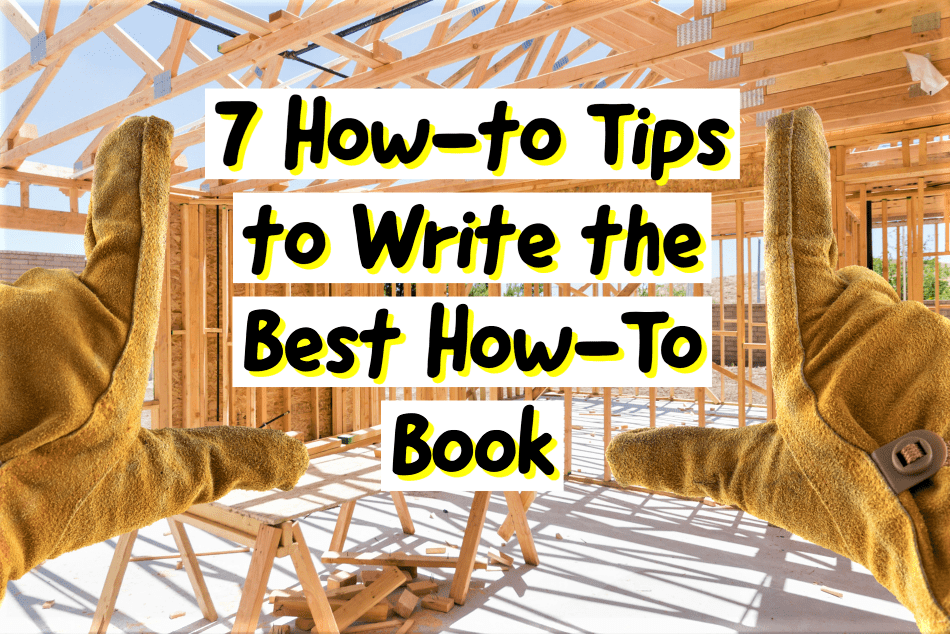by Shirley Jump
As a nonfiction editor and ghostwriter, I’ve worked on many how-to books with my clients on topics ranging from addiction to entrepreneurship. So when it came time to write my own, Writing Compelling Fiction, I thought it would be easy. After all, I’ve taught writing for years and have written multiple columns about how to be a better writer.
But it turns out writing my own how-to book wasn’t the piece of cake I expected, and it took me longer to get it going than I thought it would. I knew a how-to book had to provide value for the readers’ time, information that they could use, and be unique in the marketplace.
What I was writing about, however, was fiction, a topic I had taught and knew a lot about (after publishing more than seven dozen novels of my own) but had never compiled into one resource. How was I going to deliver value in a unique way, and in a crowded market?
I needed a how-to book on how-to books.
The lessons I learned are ones any how-to writer can take and apply to their own book to make it as powerful and effective as possible. They’re also lessons that will help the author make money off their book, particularly if they are using the book as entry into the lucrative worlds of speaking, teaching, and coaching.
Know your audience
The successful how-to writer starts off their project by asking these questions:
- Who is your target audience? It’s not just about the book if you are using it to build a side gig; you want to create a book that targets your goals and brand too.
- How old are they?
- Where are they in their careers?
- What sorts of things do they generally read?
- What sorts of activities do they generally engage in?
- What information do they need that they aren’t currently finding elsewhere?
Formulating answers to these particular questions helped me define and narrow the focus of my book’s planned content.
In my case, my new book targeted beginning to intermediate authors. Thinking about who they are and what they need provided me with better parameters to determine which information I should include—and also, importantly, what should be left out.
Know what makes your book different
There are something like 16 million books on Amazon. Whatever topic is being explored in your how-to book, chances are good that someone else has had that same idea and written on the same subject.
To help your book stand out from the crowd, consider the following questions:
- Do you approach the topic in a way that sets you apart from other experts?
- Is your problem-solving approach unique: possibly easier or more effective than others offered elsewhere?
- Do the tips and exercises you include come across as unique, appealing, and useful?
Be sure to play up the most compelling and unique aspects of your book in your promotional and marketing materials.
Begin with the end in mind
- You should know what you want your readers to learn before you write a word.
- When they put down your book, what should they be able to do?
- Are you providing enough information for them to attempt it alone?
The goal of a how-to book is to leave readers with all the tools they need to DIY.
Provide examples
Every good how-to book should have constructive examples.
Classic literary advice: Show, don’t tell.
I include a dissected scene in every chapter of my writing how-to book, breaking down the process and literally showing the lessons in action to the reader instead of just dryly instructing, i.e., telling them.
It’s difficult for many readers to read (or hear) how to do something without actually seeing it done. Visual elements can cement the lesson for them.
Provide practical lessons
My biggest pet peeve with lots of how-to books is that they tell you all the things you are doing wrong, but they don’t provide enough exercises or tips on how to apply those lessons in real life.
Many authors I work with are initially afraid of spilling too many “secrets” in their books, thinking the reader will have so much information they won’t come back for more. Here’s the truth—if the reader loves what you are teaching and gains value from it, they will want more of everything you offer. They’ll sign up for your classes, your newsletter, your seminars, etc. They will follow your social media and want more engagement with someone who has given them the tools to change their lives or work.
A great how-to book keeps reader enthusiasm on the subject high. It delivers enough actionable items to help readers take the lessons and apply them in their real lives. That helps build enthusiastic fans who rave about the book to their friends.
Test drive your how-to
You aren’t finished with your manuscript until after you get a beta read by someone who is at the same knowledge or skill level as your intended reader. With my company, I have other editors who work under me and do a second pass edit to look for any gaps in the information.
The author and I have been very close to the topic for many months as we worked on the book, and this outside perspective is always helpful. At this stage, you want your editor or beta readers who don’t know much about the topic to ask questions, so you can fill in any needed knowledge gaps.
Don’t waste the reader’s time
This is my personal mantra for everything I create: If you are giving me precious hours of your life to read my book—hours you are not spending with your partner, your kids, your job, your friends—then I better deliver a great value for that time investment. We have a limited number of hours in our lives, and I don’t want to waste any of my readers’ hours.
When reviewing your manuscript, be sure to proof for excess words or rambling paragraphs—then cut them. Don’t just fill the book with words to make it look like another version of War and Peace. Fill it with meaningful, impactful words that make a difference.
The best how-to books are memorable, which makes impressed readers recommend them to friends and family.
Positive word of mouth sells books.
I know because there are several books that I buy over and over again because I keep giving away my copies. (The books are that good.)
Make your how-to book’s reader experience especially beneficial or unique so enthused readers will want to tell other readers about your book —helping you build a loyal and enthusiastic audience who can’t wait for your next release.
What’s the best how-to book you ever read and why? We’d love to hear on Facebook.

 Shirley Jump, author of Writing Compelling Fiction, is an award-winning, New York Times, Wall Street Journal, Amazon, and USA Today bestselling author who has published more than 80 books in 24 countries. Her most recent books hit #1 in two categories on Amazon, and her Christmas novella hit the USA Today list in November. As the owner of JumpStart Creative Solutions, Shirley also does book building, content editing, ghostwriting, and author coaching. She has spoken all over the world about the power of narrative and how to create compelling books. A former reporter, she has a background in all aspects of writing, from hard news to publicity to fiction. Visit her website or see her on Facebook, Twitter, Instagram, and LinkedIn @ShirleyJump.
Shirley Jump, author of Writing Compelling Fiction, is an award-winning, New York Times, Wall Street Journal, Amazon, and USA Today bestselling author who has published more than 80 books in 24 countries. Her most recent books hit #1 in two categories on Amazon, and her Christmas novella hit the USA Today list in November. As the owner of JumpStart Creative Solutions, Shirley also does book building, content editing, ghostwriting, and author coaching. She has spoken all over the world about the power of narrative and how to create compelling books. A former reporter, she has a background in all aspects of writing, from hard news to publicity to fiction. Visit her website or see her on Facebook, Twitter, Instagram, and LinkedIn @ShirleyJump.





